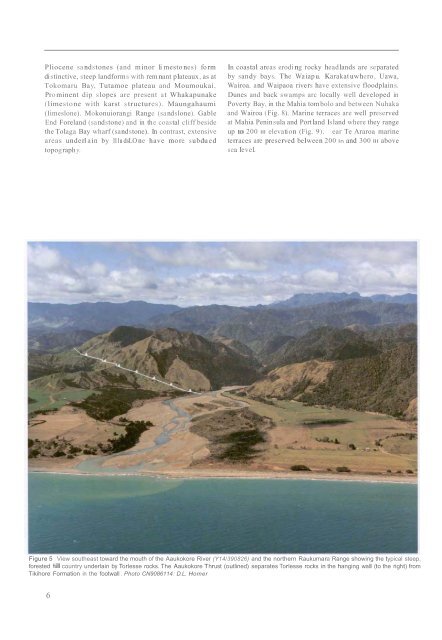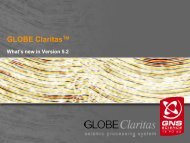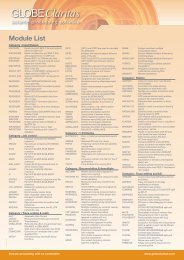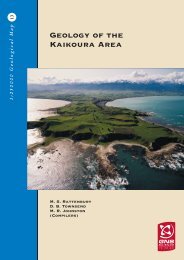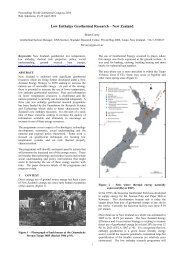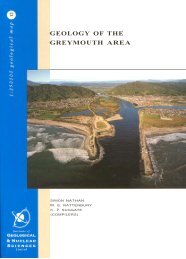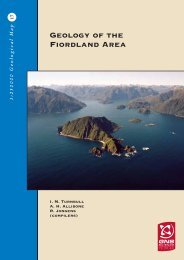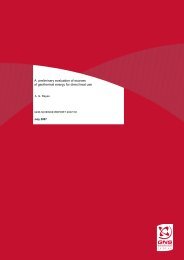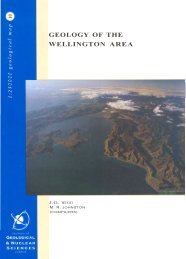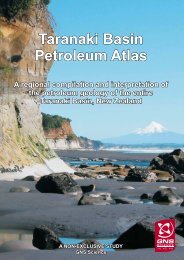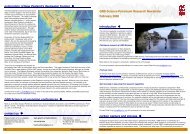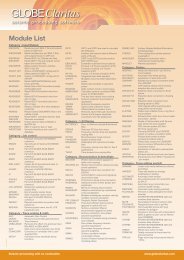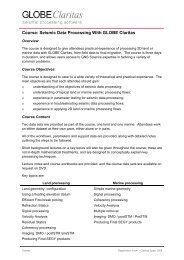GEOLOGY OF THE - GNS Science
GEOLOGY OF THE - GNS Science
GEOLOGY OF THE - GNS Science
Create successful ePaper yourself
Turn your PDF publications into a flip-book with our unique Google optimized e-Paper software.
Pliocene sandstones (and minor li mestones) fo rmdistinctive, steep landforms with rem nant plateaux, as atTokomaru Bay, Tutamoe plateau and Moumoukai.Prominent dip slopes are present at Whakapunake(limestone with karst structures). Maungahaumi(Iimeslone). Mokonuiorangi Range (sandslone). GableEnd Foreland (sandstone) and in the coastal cliff besidethe Tolaga Bay wharf (sandstone). In contrast, extensiveareas underl ain by l11u dsLO ne have mo re subdu edtopography.In coastal areas erodi ng rocky headlands are separatedby sandy bays. The Wa iapu. Karakatuwhero, Uawa,Wairoa. and Waipaoa rivers have extensive floodplains.Dunes and back swamps arc locally well developed inPoverty Bay, in the Mahia tombolo and between Nuhakaand Wairoa (Fig. 8). Marine terraces are well preservedat Mahia Peninsula and Port land Island where they rangeup to 200 III elevation (Fig. 9). ear Te Araroa marineterraces are preserved belween 200 In and 300 III abovesea level.Figure 5 View southeast toward the mouth of the Aaukokore River (Y14/390826) and the northern Raukumara Range showing the typical steep,forested hill country underlain by Torlesse rocks. The Aaukokore Thrust (outlined) separates Torlesse rocks in the hanging wall (to the right) fromTikihore Formation in the footwall . Photo CN9086114: D.L. Homer6


